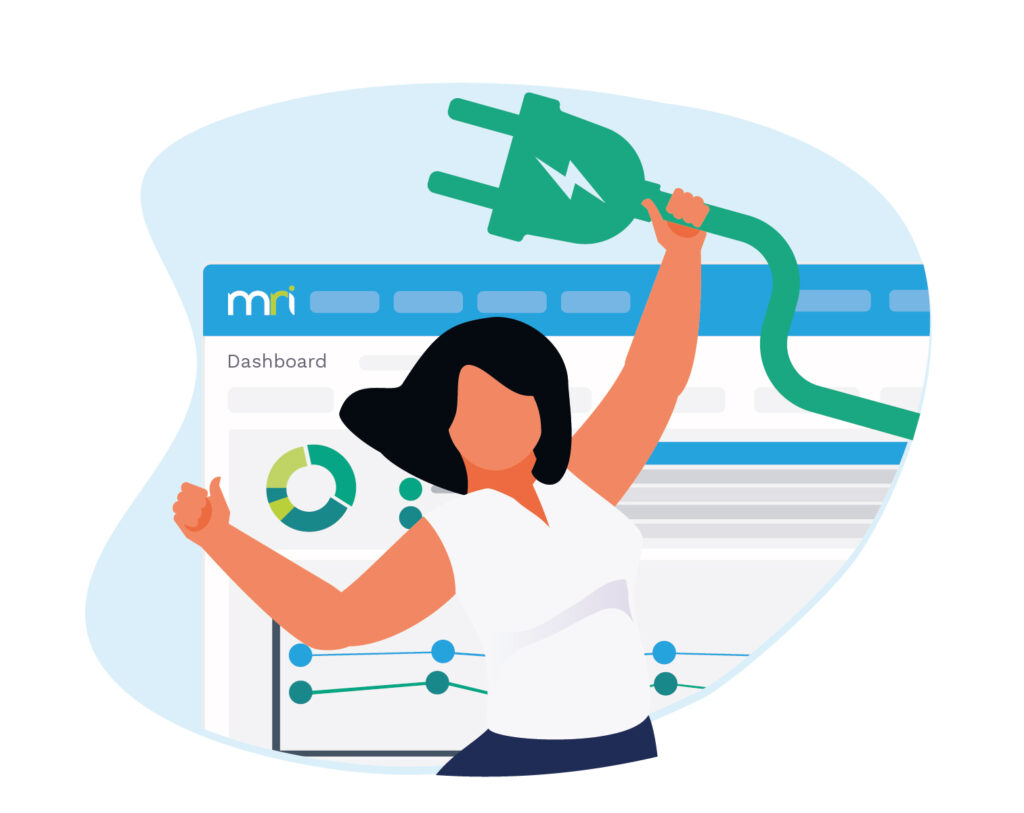What is an energy management system?
In recent times, the price of energy and utilities has risen for businesses and consumers around the world. Last year for example, interruptions to gas supplies due to the war in Ukraine caused costs to sky-rocket globally, and though prices are beginning to drop again, organisations are becoming increasingly awake to the need to manage their energy.
In this blog, we will explain everything you need to know about an energy management system, common features and how it can benefit your business.
What is an Energy Management System?
An energy management system (EMS) is a software-based system designed to monitor, control and optimise energy usage in various types of facilities. It is used to improve energy efficiency, reduce energy costs and minimise environmental impact.
Why should an organisation implement an energy management system?
Energy management is a strategic issue – it contributes to a number of key business goals that affect performance and influence stakeholder expectations. Below we explore some of the more compelling reasons as to why an energy management software system is instrumental in meeting these goals.
Visibility – With an energy management system, you can gain full visibility and deep insight into how energy is used across your business, as well as identify trends and anomalies, allowing you to respond and stay in control.
Insight – With full visibility, and purpose-built dashboards, you can use this insight to drive change. Equipped with up-to-the minute consumption data, you can inspire and inform colleagues, as well as highlight areas where efficiencies can be built in.
Efficiency – With the insights provided by your energy management system, you can identify areas of low efficiency and achieve key energy saving targets through reduced consumption and smarter energy usage.
Cost effectiveness – By lowering energy consumption, you can mitigate the soaring energy rates and strengthen your organisation’s financial stability.
Revenue assurance – With a 360 degree overview of energy usage and cost, you can drive revenue assurance and have full awareness of your organisation’s energy-related overheads.
Work towards net zero – an energy management system aids in the identification of areas of high energy usage and provides data that can help to highlight areas where more sustainable practices can be implemented. This all helps towards reducing carbon and emissions and meeting government targets of net zero by 2050.
Compliance – with an EMS, you can ensure that your business is meeting green lease clauses, complying with legislation and meeting other regulatory obligations.
Reduce operational costs – with full overview and insights delivered via purpose-built dashboards, you can identify problems and anomalies before they become costly faults. You can also see where consumption is highest across your portfolio and work to reduce the operational costs.
What are the most common mistakes that organisations make when investing in an energy management system?
For some businesses, the implementation of a specialist energy management software solution is often a tick in the box exercise in a drive to improve its energy management practices. However, without clear goals and objectives as well as full commitment at a senior level and dedicated resources in place, optimisation will not take place. Below we explore some of the key mistakes that are often made.
- Misunderstanding the purpose of the system – a common mistake made by organisations investing in software is a failure to understand that the system is there to provide insight, it will not save your company energy simply by being implemented. To get the most from an EMS, you should develop a strategy around it, using the data provided by the system to create a roadmap for your business.
- Lack of commitment from the top – changing your organisation’s approach to energy usage is likely to require major adjustments to operations and investment from upper management in terms of cost and resource. To see the benefits of effective energy management, commitment from the top and the appointment of dedicated staff to coordinate the energy related agenda across portfolios is required.
- Insufficient focus on capturing granular data – the minutiae of your organisation’s energy usage is just as important as the headline figures. High impact, low-cost changes can be identified when data is gathered and analysed not only across infrastructures, but on an appliance level too.
- Lack of proactivity in policy-making – real change can only occur when energy efficient practice is written into company policy and all colleagues are given training into the company’s approach. It’s important to ensure that energy management strategies are adopted by, and enveloped into the company culture.
- Lack of strategic direction –measuring benchmarks, setting targets and putting in place data-driven initiatives to meet those targets is vital in driving change. It’s important to be clear around targets for reducing energy, carbon and spend, as well as building robust and informed strategies to meet them.
What do you need for an effective energy management system?
There is a variety of energy management products on offer and it’s important to find a solution that works for your business and team. It is also important to consider the following features and tools to ensure your solution delivers on important factors.
Data collection
One of the most important functions of an EMS, data collection should include centralising all your energy-related data in an easily accessible format. Your EMS should be able to store data from any source, system or format, to ensure your appliances and systems can be properly measured for usage. In addition, it’s important that storage is secure, to ensure data is protected, accurate and trustworthy.
Sustainability management
Vital for reporting against sustainability targets, a good EMS will have strong functionality in terms of sustainability management. This means that it includes comprehensive carbon reporting, which can be leveraged with various stakeholders, as well as functionality to track progress against targets and ESG initiatives. For Greenhouse Gas reporting, a good EMS will be able to automate and simplify this to improve efficiency and reduce the need for staff time and resource.
Anomaly detection
An important feature for ensuring equipment and appliances are operating properly, as well as reducing data errors, anomaly detection should include the ability to receive and generate automatic alerts when an anomaly is detected, as well as creating alerts and actions when usage data is outside of tolerated levels.
Utility bill management
The ability to analyse energy usage in terms of costs and tariffs, as well as create and monitor budgets, is an essential tool, as well as the ability to compare and verify bill values against collected meter data to ensure accurate billing.
Energy analysis and dashboards
For essential energy analysis, it’s important to choose an EMS that allows access to a unified view of business metrics, offering customisable dashboards. This will allow you to identify savings and drive accountability, as well as gain insights into energy usage across your portfolio and make informed, data driven decisions around building sustainability.
Regulatory compliance
As climate action gathers pace, it’s important to ensure that your EMS helps you to make strides towards your ESG objectives and ensure compliance against industry legislation including net-zero, ISO standards and more.
Tenant billing
An EMS should also simplify and optimise tenant billing, through automatic billing for utility usage, as well as invoice validation against real energy usage data.
The benefits of an energy management system to different company functions
Energy management is an organisation-wide strategy that impacts various teams and functions. A centralised software solution will be used across the business and provide different benefits to each team as follows:
Energy managers
- Offers full visibility and control of energy-related data and consumption costs across the organisation/portfolios.
- Allows energy managers to keep pace with ever-changing regulations and reporting requirements.
- Provides comprehensive documentation on all energy information, including the range of meters across a portfolio, the different utilities used etc..
- Offers the ability to proactively manage energy costs and meet management expectations.
Production
- Drives down operational costs.
- Sets and measures against objectives.
- Allows the deployment of instructions/directions across broad portfolios.
- Reduces the need for technical meetings.
- Increases profitability of assets.
- Offers spend tracking and ROI projection.
Information systems
- Improves data and system security.
- Provides an improved overview of new standards including ISO, GDPR and new legislation.
- Future proofs technologies and supplier technologies across the business.
How MRI Software can help you manage your energy consumption
At MRI Software, we’re passionate about helping you leverage technology to drive greater operational efficiencies. Specialist energy management software is becoming more and more instrumental in enabling organisations to mitigate energy rates, reduce waste and comply with legislation.
With over 30,000 users across more than 260,000 buildings using our energy management software, contact us today to find out more about how our solution can enable you to gain total visibility and take full control over your energy consumption.

Accelerating UK’s Higher Education Towards Net Zero
“Net Zero” has become increasingly prominent in discussions about climate change mitigation. Higher Education (HE) institutions hold a unique position in shaping the future, not only through education but also through their operational practices and …

